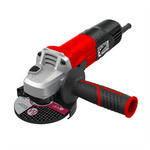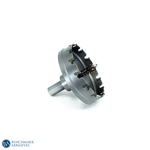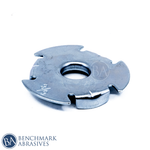
Buffing Vs Polishing Vs Waxing

A primer protects the bodywork before the color is painted in one or more coats. Paint is applied to cars in many layers. To safeguard the softer paint underneath the color layers, a clear protective coat is applied over them.
Buffing, waxing, and polishing are crucial strategies for maintaining automotive paintwork. They fulfill several purposes, depending on the complexity of the issue you're trying to address.
Buffing and waxing create a protective finish while polishing and buffing remove blemishes from the paint's top transparent coat layers.
Wax Or Polish
You might think auto wax and polish are identical, but they aren't identical. The primary distinction is that automobile polish is abrasive compared to furniture polish. It's time to break the polish if the paint looks dimpling, fading, oxidizing, or displaying minor scratches. Car polish is a liquid substance that comes in varying abrasiveness levels. Know about various other polishing compounds and their uses.
What Exactly Is Polish?
When applying car polish, you'll remove a skinny layer of the paint's topcoat. This will remove dull, oxidized paint, lessen or remove scratches, and create a smooth surface that reflects light and makes the car appear brighter. An automobile can be hand-polished at home. If you bring your vehicle to a reputable valet or grooming service, they will likely use a machine significantly faster. Saving time is lovely, but working more quickly could remove paint from metal than is necessary to restore the paintwork.
What Is Auto Wax, and What Does It Do?
Vehicle wax is a filler, but car polish is an abrasive. The top surface is evened out with wax, adding a layer of waterproof protection and producing a smooth finish that uniformly reflects light, making the paintwork shine. Many different vehicle wax brands are available; most are blends of natural waxes and solvents that eliminate paintwork flaws. When waxing a car at home, you typically apply it with a soft cloth. You wait a few minutes and then use a soft, dry cloth to remove any wax that hasn't adhered to the paintwork. Hand-waxing an automobile will take many hours. Wax can also be applied mechanically, which accelerates the procedure.
Always wash your car before waxing. Oils and water don't mix well, so wait until it's scorched before applying wax. You should wax your car in a spotless, dust-free atmosphere. If you must work outside, choose a calm day to avoid wind-driven dirt.
When To Use Wax And Polish Simultaneously
Professional car valets frequently question whether polishing a car before polishing is necessary. Not always, is the response. It's acceptable to wash your automobile and then wax it without polishing if you're satisfied with the paintwork's state and there are no flaws you wish to fix. To save time, you can also use a mobile car wash service. In contrast, you should polish and wax the car to eliminate or minimize scratches. You should then reapply a layer of protection. First, polish, then wax has to be the order.
Read more: Guide To Metal Polishing
What Is Buffing?
The color layer of a car's paintwork can have defects that are removed through car buffing. Machines always carry out the process. If you decide to buy a buffing machine, you can do it at home, but it's a laborious and slow procedure. The finish of the paintwork can be harmed by improper buffing machine use, which can result in thousands of tiny scratches, all pointing in the same direction. These are swirl marks.
What Separates Polishing and Buffing
Polishing a car removes minor blemishes and scratches in the top clear coat of the paint finish. Buffing works more effectively to treat deeper scratches in the color layers. Polishing can be done manually or mechanically. Machines are used exclusively for buffing. While improper or aggressive polishing might harm paintwork, this is highly uncommon, especially if the work is done by hand. It happens more often when poor polishing damages paintwork.
KEY POINTS
- Maintaining paintwork requires buffing, waxing, and polishing.
- Use the appropriate technique to address the problem you want to address because different techniques have different purposes.
- Waxing and polishing can be done by hand at home, but buffing, which is often the domain of professionals, requires a machine.
Additional Tips:
Following are some additional tips for achieving the desired result while buffing, waxing, and polishing:
- Surface preparation: Prepare the surface by removing any residues, dust, and debris and washing it thoroughly with water. This will give you a smooth and even surface.
- Work in the shade: Always work in the shade because direct sunlight can cause the wax or polish to dry quickly, making it hard to apply and damaging the paint.
- Work in sections: Work in parts or sections for smooth and accurate results. This also helps you better control the workpiece.
- Use a microfiber cloth or towel: Be sure to use a microfiber cloth or towel to remove excess polish or wax, as they are soft and good absorbers.
- Maintain constant pressure: Be careful while using a buffing or polishing machine. Make sure to maintain constant pressure. Applying excess pressure will damage the paint or workpiece, whereas applying too low pressure will not give effective results.
- Let it dry: For optimal results, always make sure that the wax or polish has dried completely before buffing.
- Protective coatings: Apply a sealant or a protective coating to provide an extra layer of protection. This also helps maintain a shiny and smooth surface.



































































